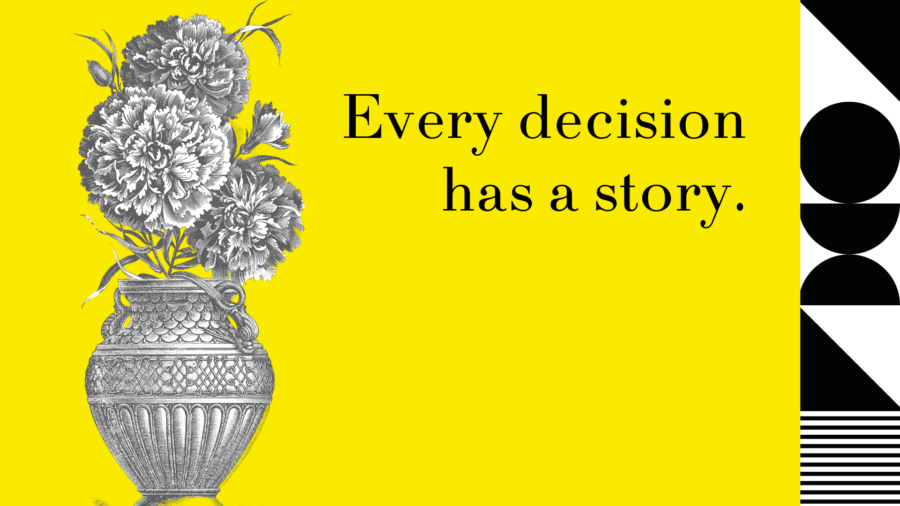Picture this: it’s time for a household upgrade—perhaps your dishes and flatware need replacing. You’re aiming to keep costs down while ensuring durability. With a modest budget of $200 in hand, you head to the sprawling aisles of IKEA.
Amidst the labyrinth of options, you spy a charming Fnork flower vase, ideal for your kitchen. And look, there’s a Splank tablecloth that would complement your curtains perfectly! Oh, and if you’re grabbing the Splank, why not complete the set with the matching Slumple rug? After a brief pause for some Swedish meatballs, the spree continues. As you finally make your way to the checkout, the total rings up to $500—$300 more than intended!
If this scenario rings a bell, you’re in good company. According to a study from the University of London, a staggering 60 percent of purchases at IKEA are spontaneous.
The reason why is one of the most important principles of long-term change: every decision has a story.
There’s no such thing as a truly rational decision. At least, not the way you traditionally think of it. What you may think of as a rational decision—a logical consideration of the pros and cons of why a decision is right or wrong—is, in reality, something you create after your brain has already decided. It’s a story you tell yourself:
“If I get this, then my house will look better.”
Or “I can use this, so I’ll buy it.”
And “I need this because I want it.”
Notice that these decisions aren’t based on “once upon a time” stories like fairy tales, but they are similar. Both kinds of stories argue for a particular course of action—sometimes quite literally (“Slow and steady wins the race!”)—by establishing how cause and effect are related. Our brains unconsciously craft these story-arguments to help us make sense of the world, to describe why something has happened, is happening, or should happen.
When people decide to act, it’s because they’ve accepted their brain’s internal argument for how and why a particular action will deliver on a desired outcome. It’s that argument that moves them from Ambivalent or Indifferent to Active.
People will only change an action if the story supporting it changes first. That’s why any argument for change you present to someone needs to make even more sense to them than the story they’re telling themselves now.
IN OTHER WORDS…Any action someone takes ends an internal argument about why doing so makes sense. If that story makes sense, the decision will, too.
What doesn’t work internally will never work externally. Even when people’s internal arguments for action aren’t rational, they still feel rational because they follow their own kind of logic. They have a consistent structure, with consistent elements.You already know two of them:
- the “cause” (the action or change someone makes)
- and the “effect” (a desired outcome).
But stories with only those two elements, a cause and effect, aren’t valid arguments. They’re assertions—conclusions without evidence—and usually aren’t strong enough to drive action on their own.
True arguments for change include not only the action to take and the outcome it should produce, they also contain the assumptions or beliefs that create the logical connection between the two. So, it’s not just, “If I buy this flower vase my house will look better.” To drive action, the argument must also contain why the action will deliver the outcome.
For someone who wants their house to look better, the actual internal argument would go a little more like this:
- “This Fnork is a vase for flowers.” (First belief or assumption)
- “Flowers make my house look better.” (Second belief or assumption)
- “That’s why, if I buy this Fnork, my house will look better.”(The conclusion that results from the first two statements—Ding!)
Thanks to the work of the ancient philosopher Aristotle, we know that someone will agree with the conclusion if, and only if, they agree with the principles and assumptions that lead to it. Unfortunately, because this argument for action happens unconsciously, people aren’t aware that they’ve reached a conclusion, nor are they aware of the assumptions that made the conclusion true. What’s more, once a person has arrived at a decision, they usually don’t need the deeper rationalization that led them to the decision in the first place. In fact, people’s brains are naturally wired to remember only the conclusion and save space by dumping everything else.
To inspire change in others, though, you must make this quiet part of the argument out loud. You must explicitly state your conclusion and otherwise implicit assumptions so that they can determine, even if unconsciously, whether every aspect of your case is in tune with theirs. The story-argument will only resonate if its structure is complete. Action won’t occur without it.
That introduces another reason this principle is so important: since these stories that drive action are unconscious, they’re also deeply personal. They are always influenced by someone’s individual values, beliefs, desires, biases, and emotions. As a result, a person’s internal arguments may not always be based on facts or reality, but they will always represent truth and reality for that particular person.
That’s what makes the stories people build for themselves so powerful. Recent studies confirm it. For example, researchers discovered that what’s known as the “IKEA effect”—where people value objects they’ve built themselves more than those they haven’t—also applies to valuing ideas. The data may be new, but the concept isn’t.
Mathematician and philosopher Blaise Pascal framed it this way over 300 years ago: “People are generally better persuaded by reasons which have come into their own mind than those from the minds of others.”
That’s why the more you align your case with the assumptions and arguments someone already acts on, the more likely they will be to adopt and stick with the change long-term. Recognizing this can transform not only how you approach presenting change but also how well you understand others’ actions and why they make them.
